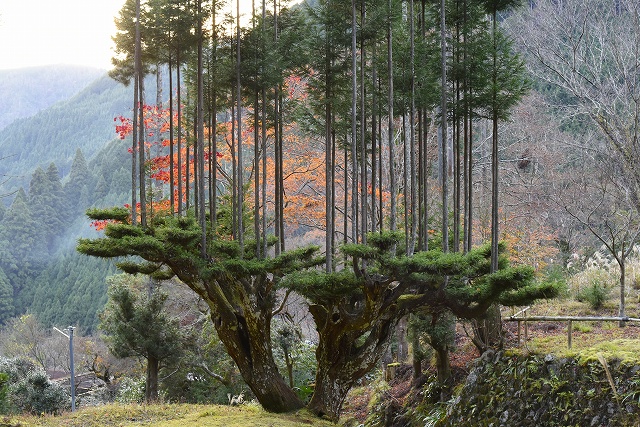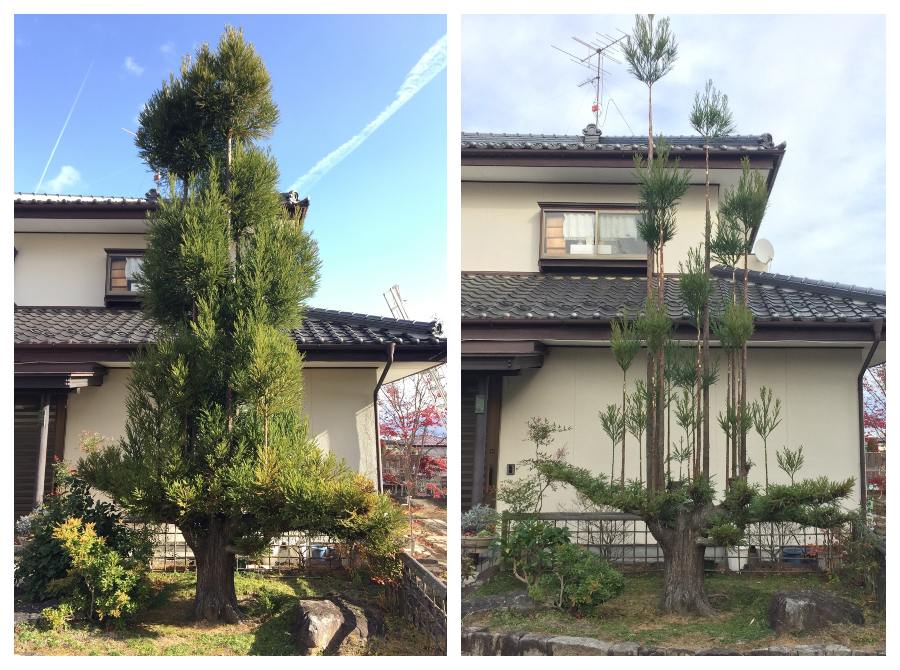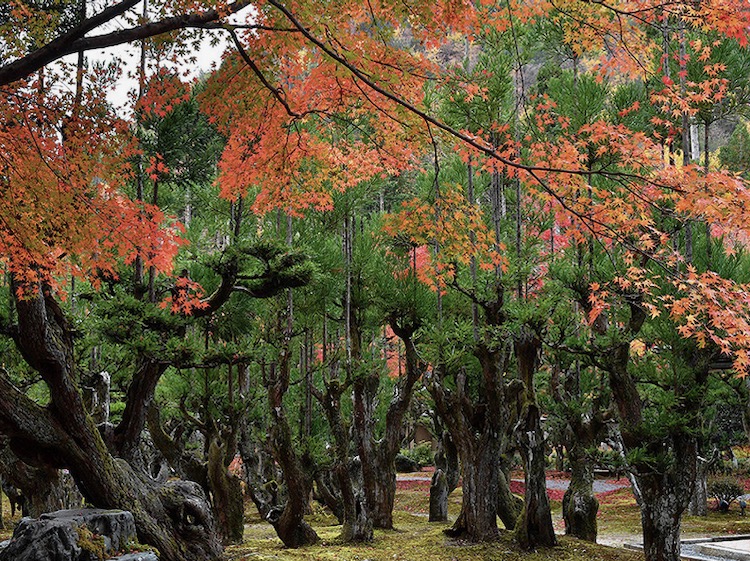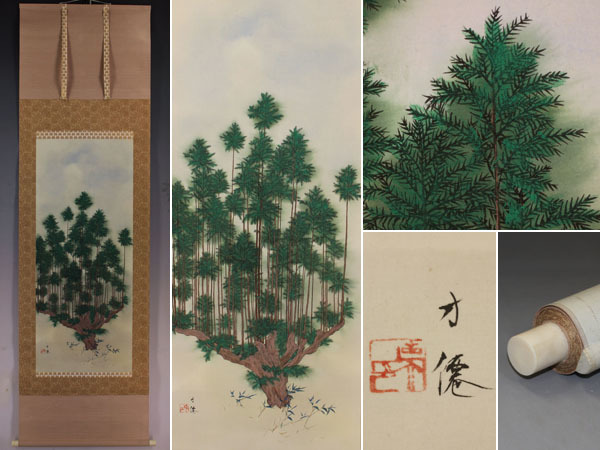
photograph courtesy Yusuke Narita
Sometime in 15th century Japan, a horticulture technique called daisugi was developed in Kyoto. Written as 台杉 and literally meaning platform cedar, the technique resulted in a tree that resembled an open palm with multiple trees growing out if it, perfectly vertical. Pictured above is a daisugi in Kyoto’s Kitayama district and is perhaps the most famous example in all of Japan.
ADVERTISEMENT
The technique was developed in Kyoto as a means of solving a seedling shortage and was used to create a sustainable harvest of timber from a single tree. Done right, the technique can prevent deforestation and result in perfectly round and straight timber known as taruki, which are used in the roofs of Japanese teahouses. Smaller, decorative daisugi also exist around Japan but maintaining them can be expensive and time-consuming. Below, gardeners from Komori Zouen show before and after pictures illustrating the technique

photos courtesy Komori Zouen
ADVERTISEMENT
Below is a forest of smaller daisugi, contrasted against fall foliage in Kyoto:

photograph courtesy Ai Hirakawa
Daisugi has also been the subject of Japanese painting. Below is a scroll of the famous Kitayama Daisugi, painted by Housen Higashihara (1886 – 1972).

a scroll by artist Housen Higashihara, spotted on auction for roughly $300
Did you enjoy this story? Become a Spoon & Tamago Member and support independent arts publishing. Join a community of like-minded readers who are passionate about Japanese art, design and culture. Get access to our shop discounts and member-only content like quarterly features and online talks with artists and designers. Learn more!
























October 26, 2020 at 4:05 pm
Interesting solution which varies from coppicing in that it moves the re qrowth from the roots/stump to existing branches.
November 9, 2020 at 10:59 am
These are so beautiful. They must take decades to accomplish. I wonder what Climate Zone these are planted?
I am in a section of Vermont, which is USDA Plant Zone 4b, meaning our winters may occasionally reach minus 25 to minus 20 F, or minus 31.7 to minus 28.9.
Many evergreens grown here including fir, as well as holly, various kinds of apples, maple, oak, etc. I’ll have research the availability of a platform cedar, as shown here.
November 9, 2020 at 3:30 pm
That’s so weird… Central Vermonter here, 4b as well. Crazy that I came across this comment a few hours after you posted. Not sure what cedar they use over in Japan but maybe red cedar would work here?